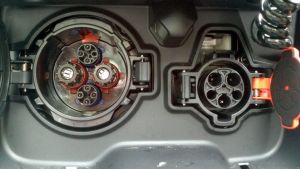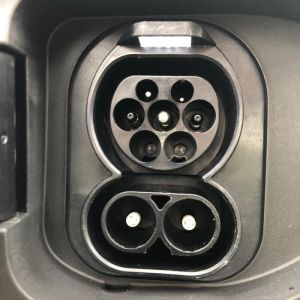Rapid Charging: Difference between revisions
Jump to navigation
Jump to search
(Adding page for ESP32-Chademo) |
(Added link to QCA700x PCB project.) |
||
| Line 28: | Line 28: | ||
Another way may be using a TP-Link TL-PA4010 ("AV500") and [[CCS EVCC using AR7420|repurposing it as a CCS EVCC]]. | Another way may be using a TP-Link TL-PA4010 ("AV500") and [[CCS EVCC using AR7420|repurposing it as a CCS EVCC]]. | ||
A third method may be to a board that contains an STM microcontroller and a QCA700x IC<ref>https://openinverter.org/forum/viewtopic.php?t=2046&sid=2af4b18b1808b7e8b481eafa5f540357</ref>. | |||
|} | |} | ||
[[Category:Charger]] | [[Category:Charger]] | ||
Revision as of 15:20, 31 July 2023
There are 2 commonly used protocols for DC Rapid Charging an EV conversion.
Chademo |
CCS |
| Chademo uses a separate socket to the ac charging port. This is found on Nissan Leaf.
|
CCS combines the AC charging port with 2 additional pins for DC charging and comes in 2 different socket type, type 1 more common in USA and the type 2 more common in Europe.
Another way may be using a TP-Link TL-PA4010 ("AV500") and repurposing it as a CCS EVCC. A third method may be to a board that contains an STM microcontroller and a QCA700x IC[1]. |

